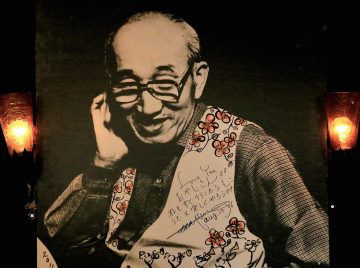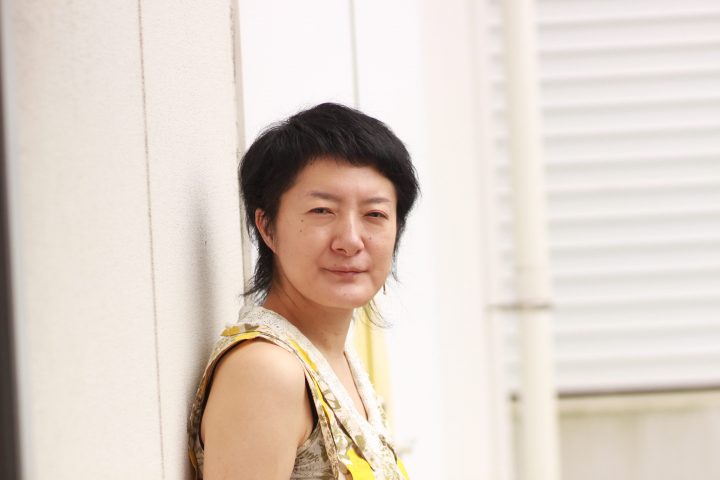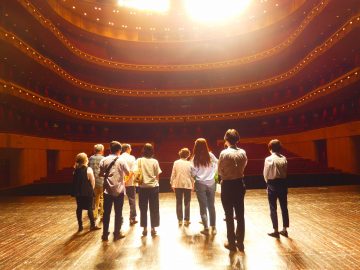Enjoy music and art in a stylish space unique to Maekawa Architecture!
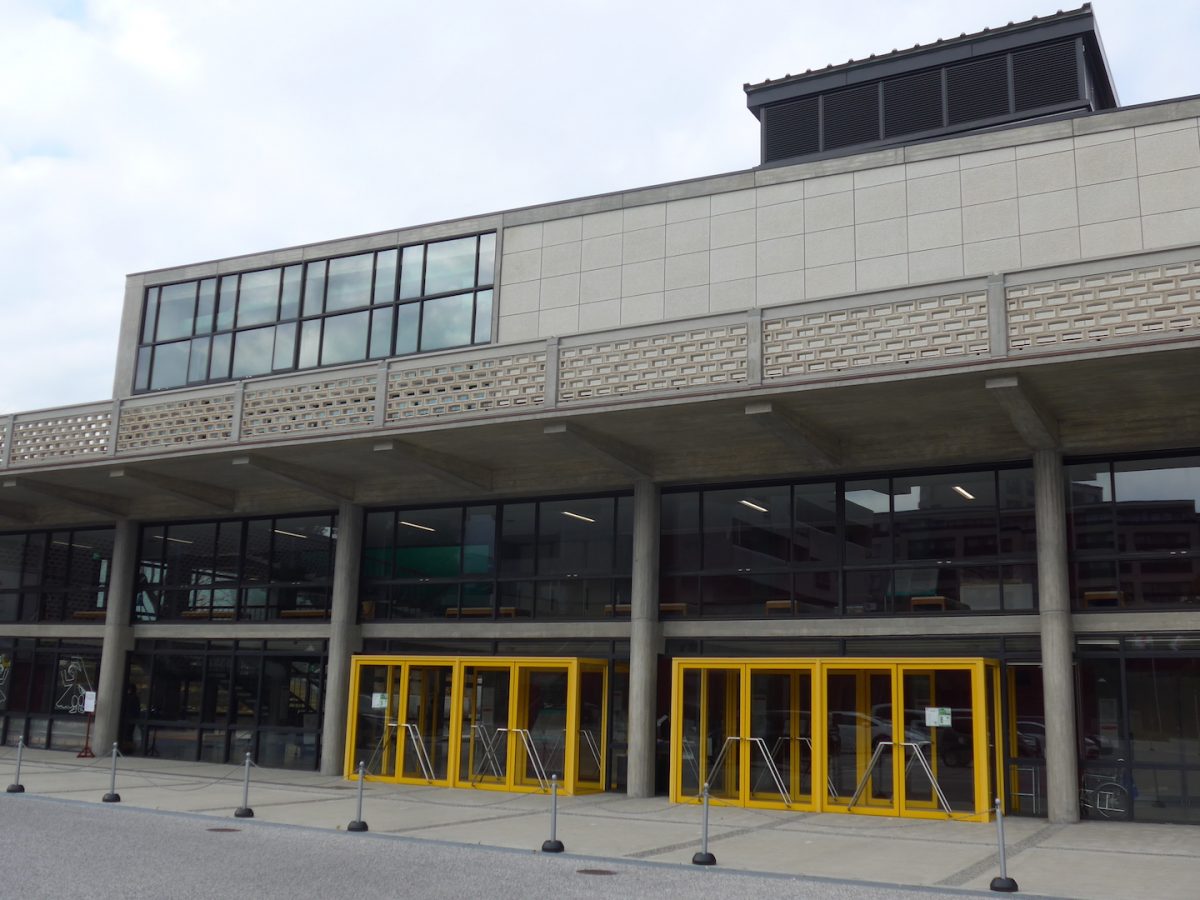
A world of art to visit, see and feel
File.32 Music Hall Open Theater "New Year's with Music, Architecture and Art"
Miyuki Inoue (Magcal Editorial Department)
The Music Hall Open Theater opens the entire building to the public and admission is free. It's a wonderful event that can be enjoyed by music fans, as well as those more interested in Maekawa architecture than music, and even preschool children. In response to the COVID-19 pandemic, this year's event will be held in both a physical and online format, so head to the physical version of the Open Theater held on Wednesday, January 6th!
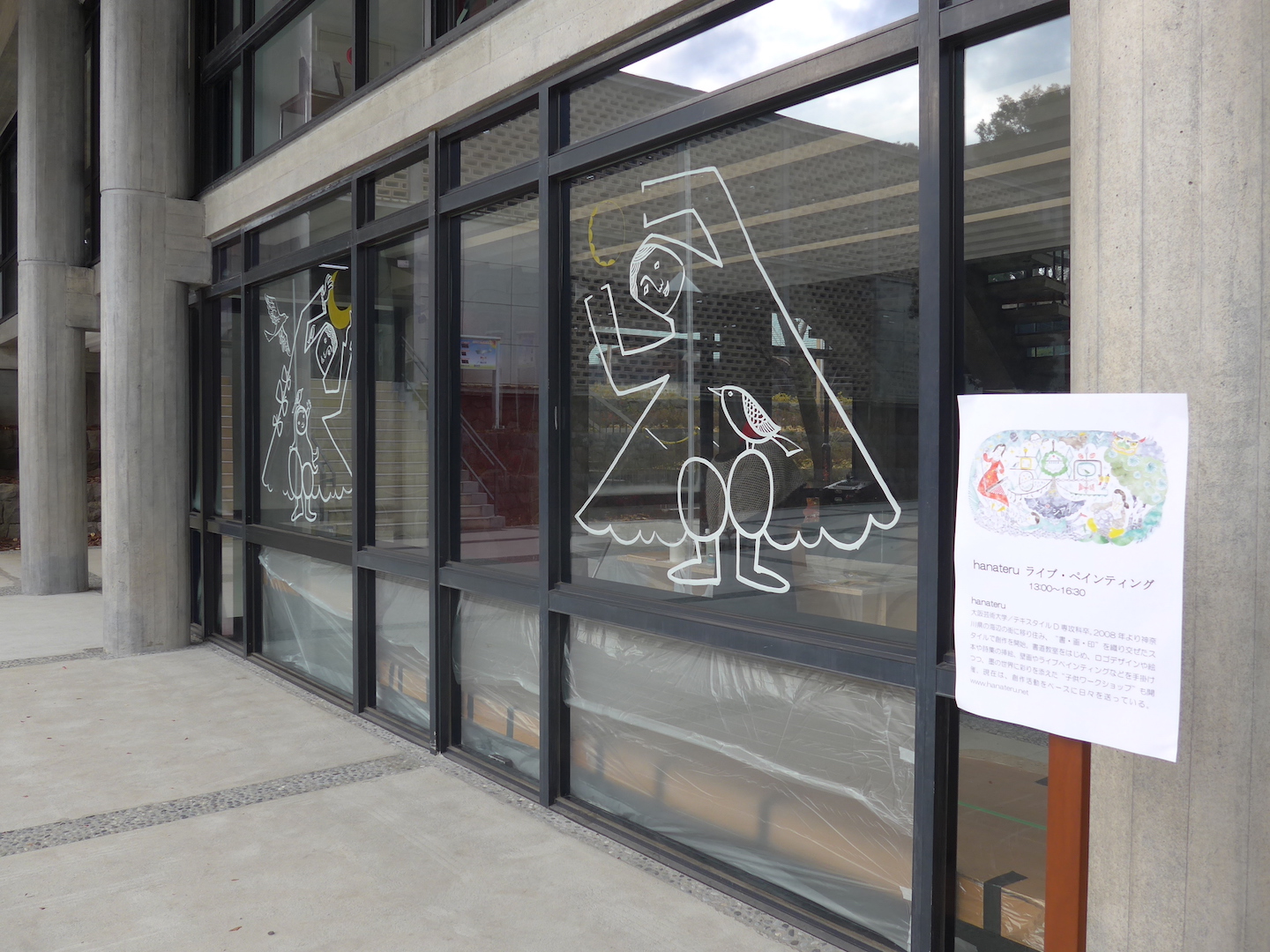
Unfortunately, both the adult and children's versions of the planned "Maekawa Architecture Tour" were cancelled. Because of this, the area around the entrance was deserted even after the opening time of 1pm...or so you'd think. But then, a cheerful atmosphere began to emanate from the other side of the glass wall. Come to think of it, there was a program called "Live Painting." I really wanted to experience the live atmosphere, so I headed inside the music hall!
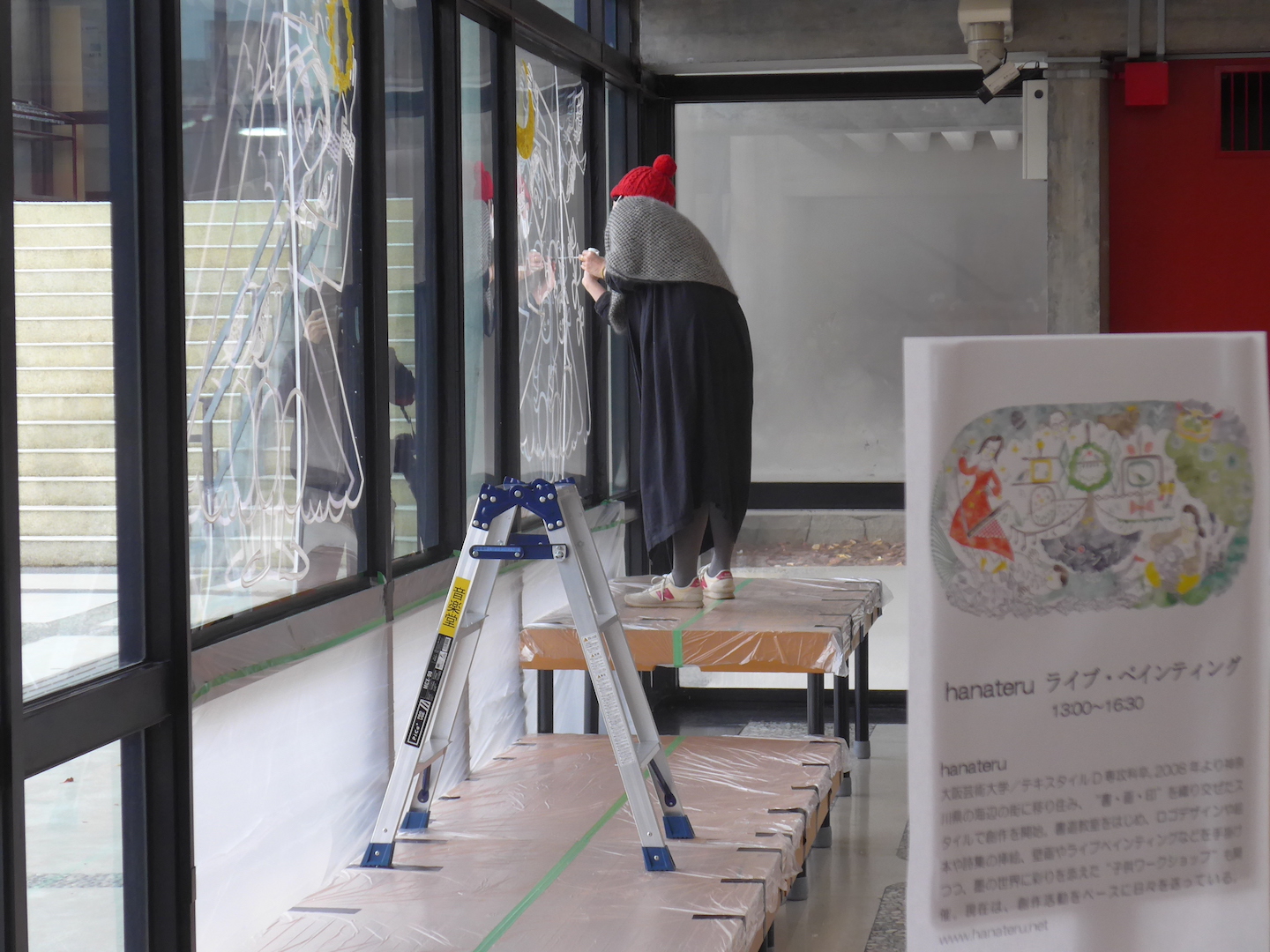
The live painting was done by calligraphy and painting artist Hanateru. He is based in Zushi and Kamakura and creates works in his own unique style. He often gets inspiration from the "ordinary but lovely scenery" he sees while walking around the neighborhood, and this time he used the glass wall of the music hall as his canvas to paint a picture inspired by "yin and yang."
The theme is "Ring of Light."
Since we had the chance, we asked him to take off his mask for a moment and took a picture!
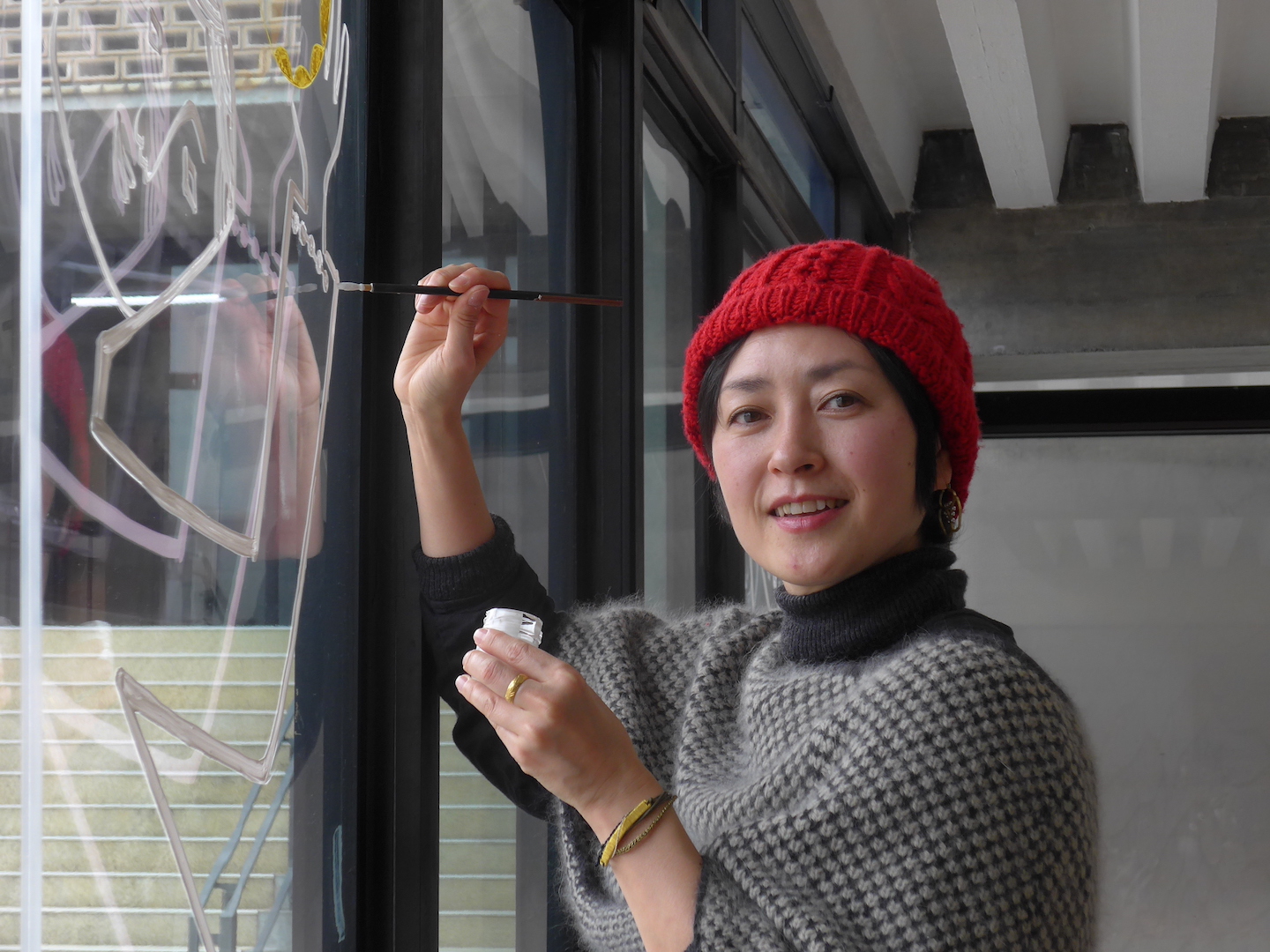
"The music hall is loved and cherished by everyone, and I feel it's a building filled with a lot of feelings. It took a bit of courage to paint inside it (laughs), but it feels really good.
The walls of the music hall are colourful - red, green and yellow - so I'm thinking of keeping my painting simple."
Suddenly, I noticed a strange object in the foyer. A UFO? Or a giant Dorayaki?
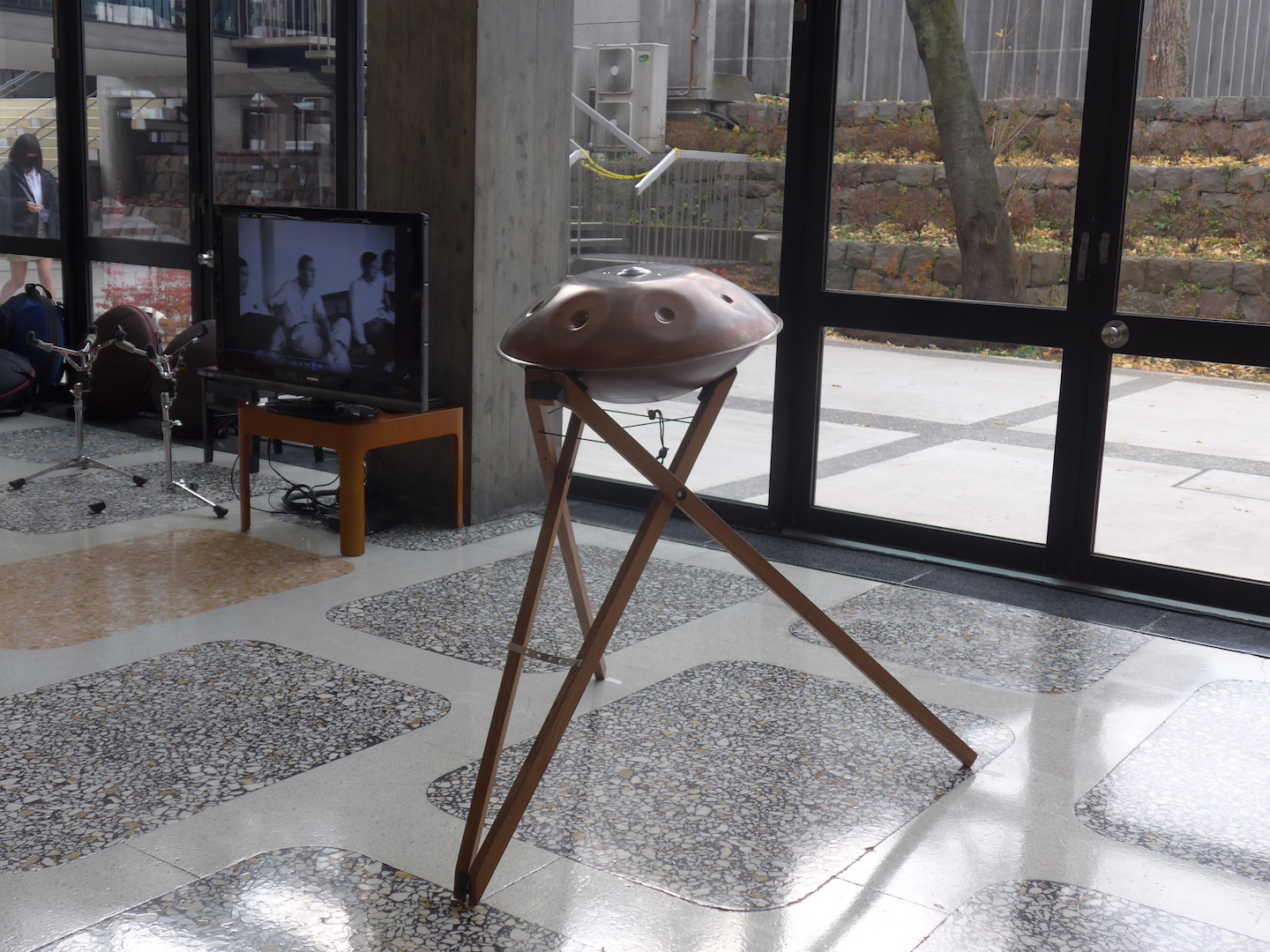
The object was a "handpan" played in another program.
The handpan is a new instrument that originated in Switzerland around 2000. Its rich, deep tone, reminiscent of gamelan, is said to be a sophisticated version of the Caribbean steelpan, and its sound is produced by flicking or hitting a dome-shaped metal plate with the fingertips.

The performer is Ryohei Kubota.
When he was in his second year of high school, he came across a video of a handpan on the web and was so impressed that he thought, "I just want to play the handpan, I can't sleep unless I play the handpan!"
"At the time, there was almost no information available in Japanese, and when I finally found a handpan, it was quite expensive for a high school student. Still, I spent all the money I had saved up to buy a bass guitar, and borrowed the rest from my parents, and somehow I managed to get one."
Since then, without a teacher or instruction book to teach him how to play, he has continued to play through trial and error, and has established himself as a player.
The passion of young people is amazing!
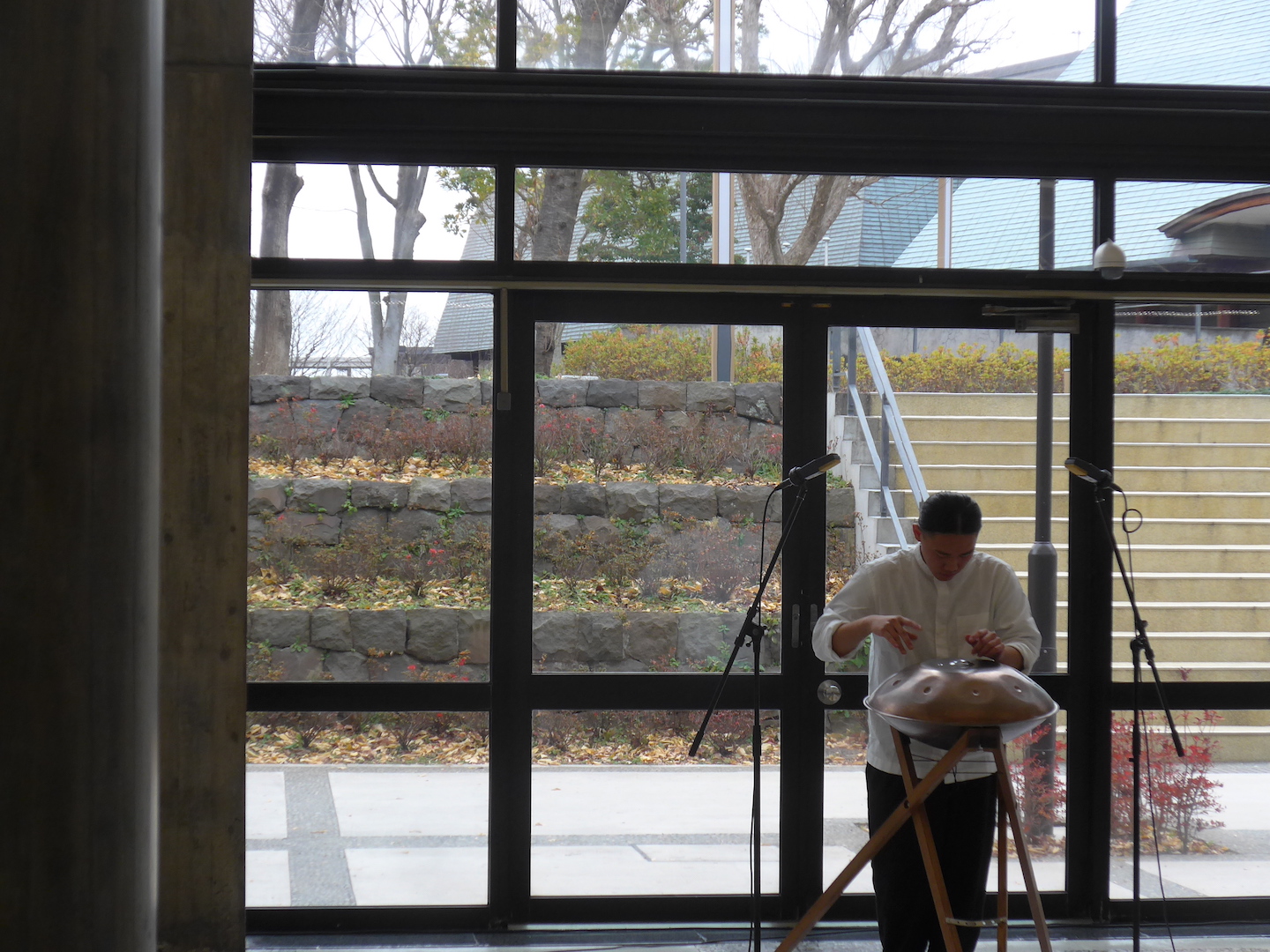
The soft sounds of handpans resonate in the sophisticated and elegant space that is unique to Maekawa architecture.
"The foyer of the music hall has a pleasant reverb, and the sound spreads beautifully. I'm looking forward to everyone hearing the live sound of the handpan."
As if drawn by the sound of the handpans, more and more customers began to arrive in the foyer. The music hall's foyer is spacious, and some of the windows are open, allowing for good ventilation, which I thought was great. However, given the current situation, the hall staff had taken even more thorough precautions.
Look! The reliable sight of air circulators lined up along the wall!
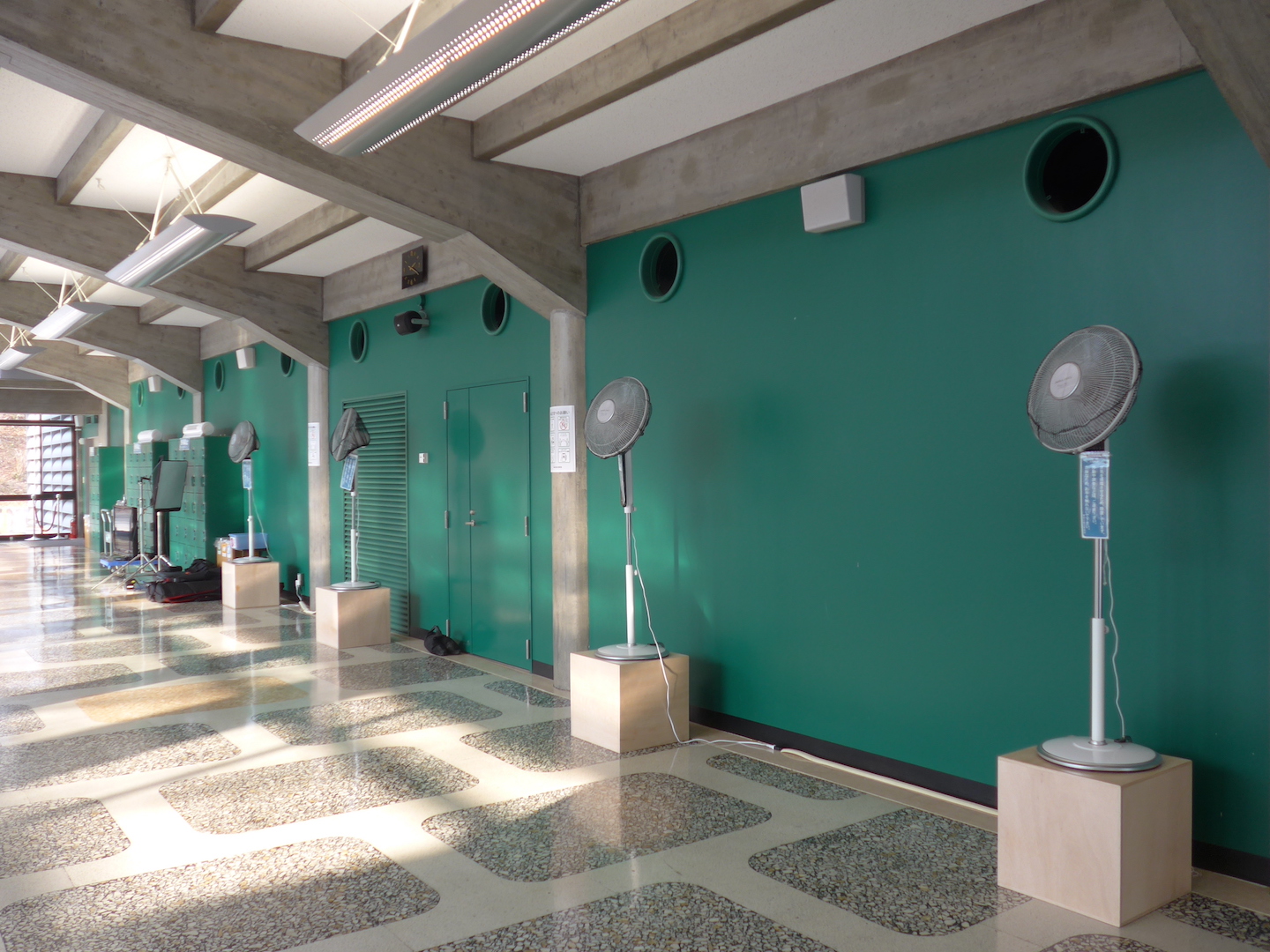
It looks like an object that blends in with the foyer's modern architectural design, making you smile.
Hanateru continued to paint while the fantastical music of the handpan played in the background.
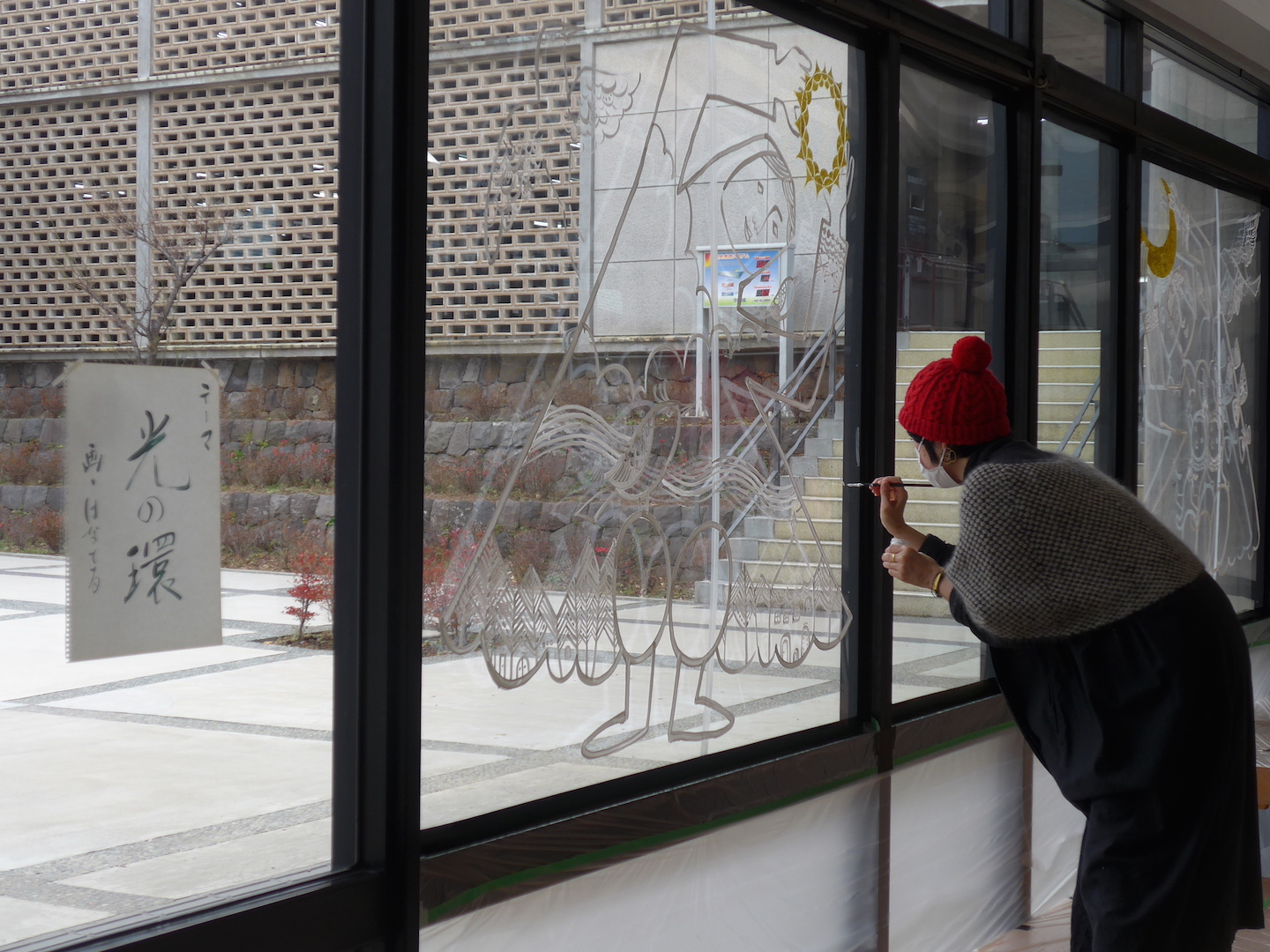
The third program was a New Year's live performance by The Poo, held in the hall. Since the seats were unreserved, I sat in a different location from the seats I usually aim for at concerts. I was able to get a panoramic view of the beautiful hall, which is made entirely of wood, from the walls to the ceiling, and it felt refreshing.
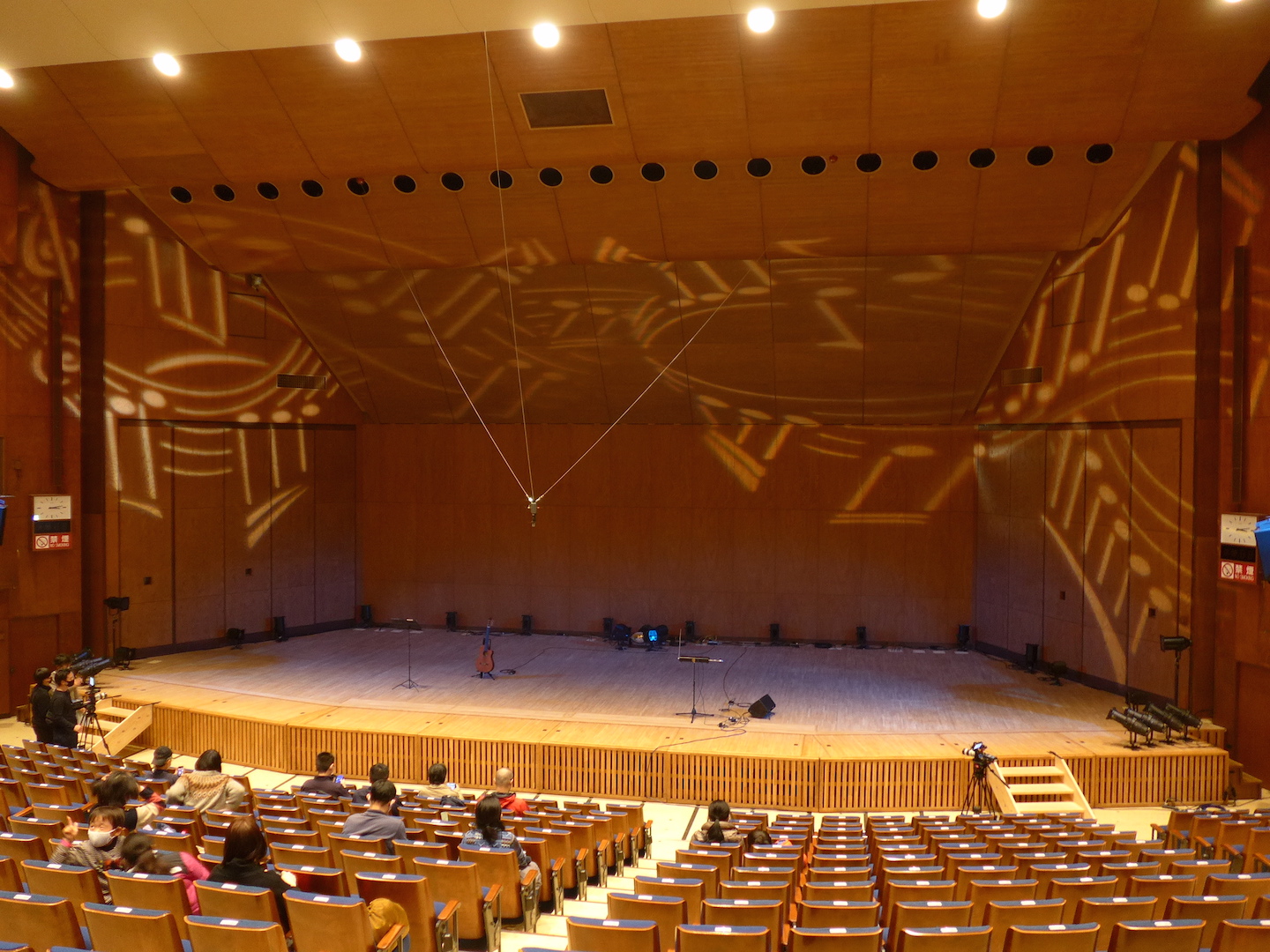
The Poo is a musical unit consisting of Machikado Machio (guitar), Machikado Machiko (theremin), Kawashima Sarutaro (puppet), and SONE Taro (producer), and is known for their surreal and stylish live performances that mix music, comedy, and theater.
I don't really know, but it sounds interesting.
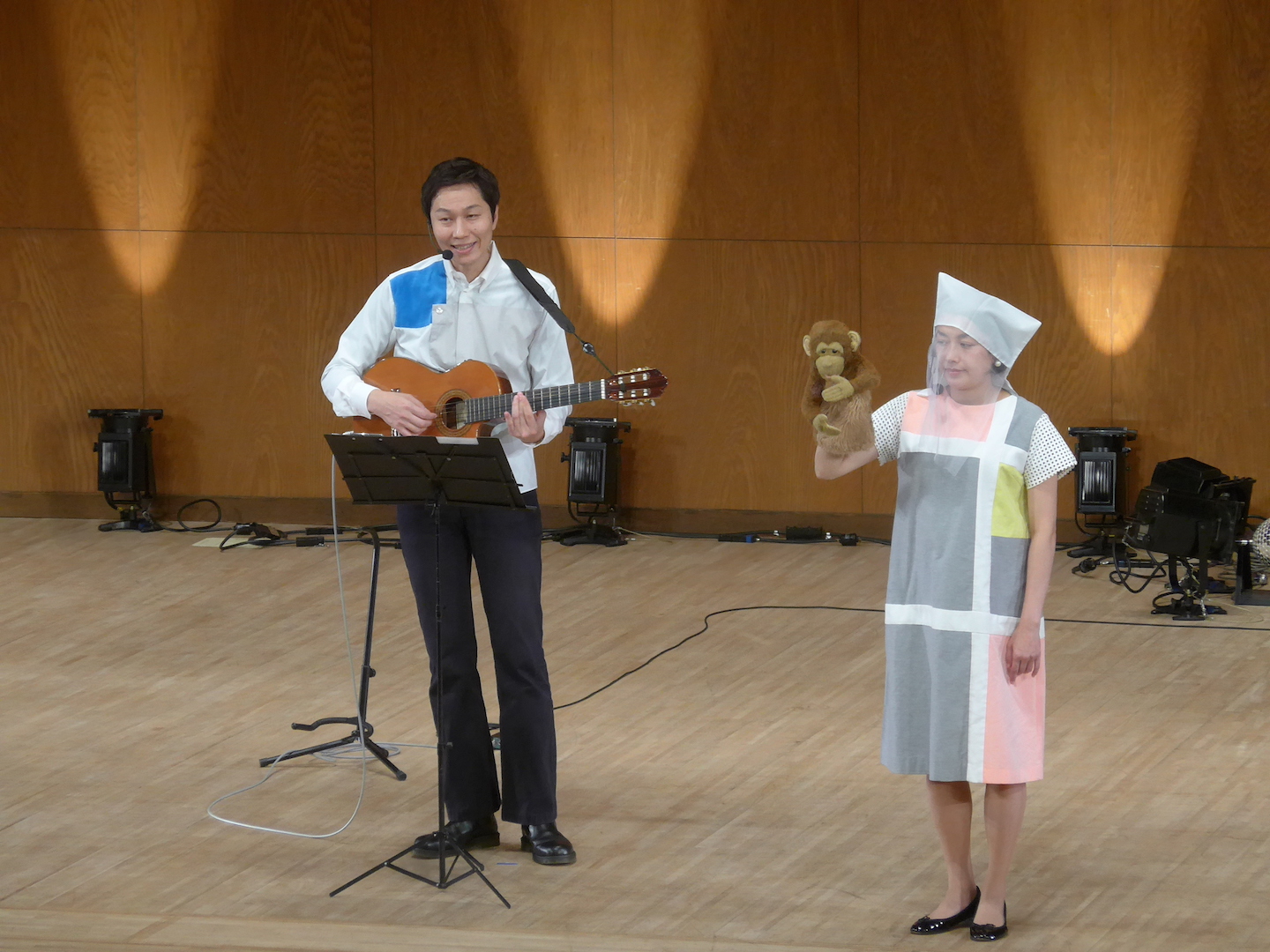
What caught my interest was Machiko playing the "Theremin." It is said to be the world's first electronic musical instrument, and apparently you can adjust the pitch and volume by positioning your hands in space without touching the instrument itself. The sight of her playing it was quite mysterious, like dancing or watching a magic trick.
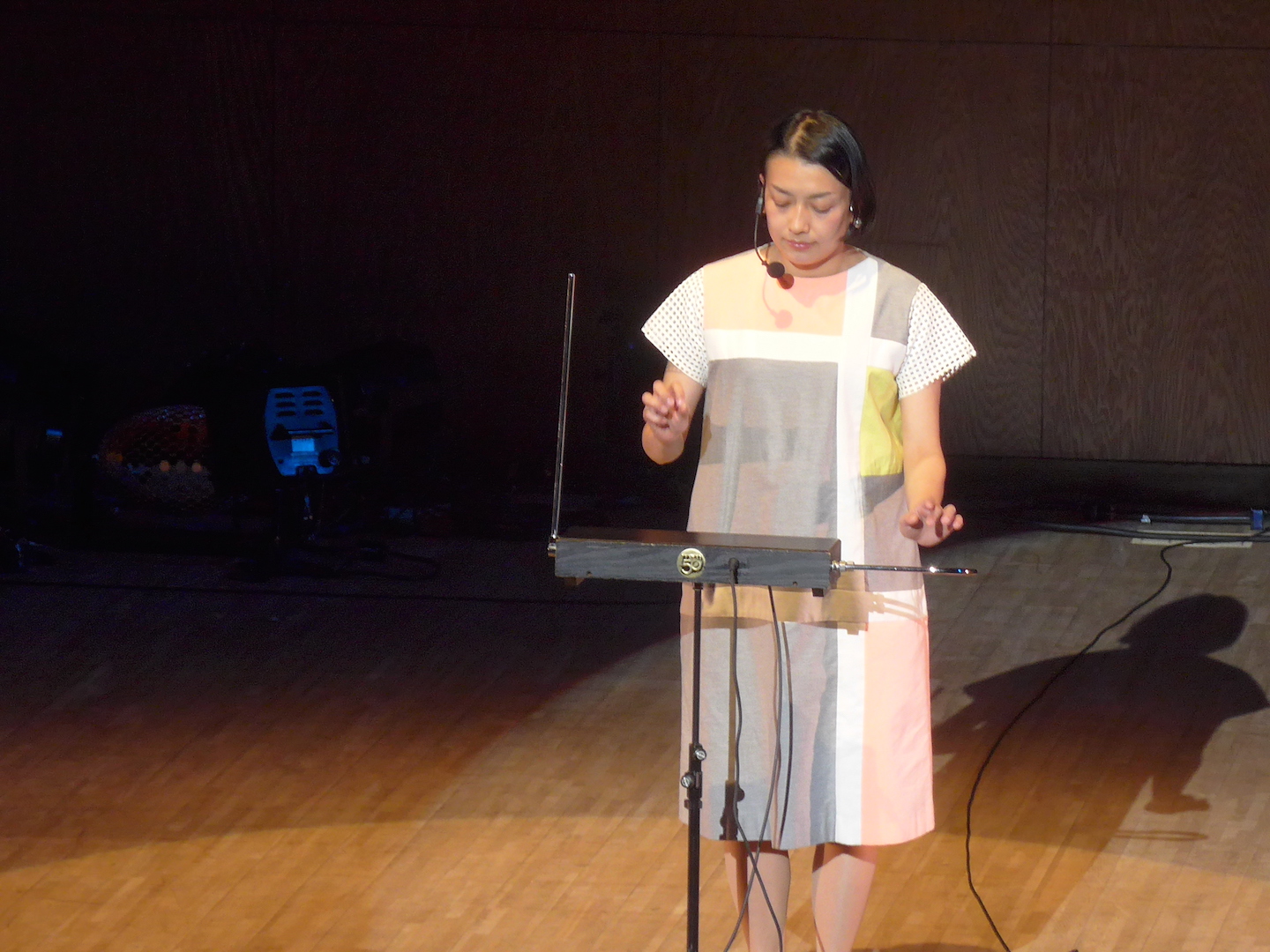
The approximately 40-minute stage was packed with talk, singing, and laughter.
If I go into detail it would be a spoiler, so please be sure to check it out on the Ongakudo Channel @YouTube, which will be released at a later date.
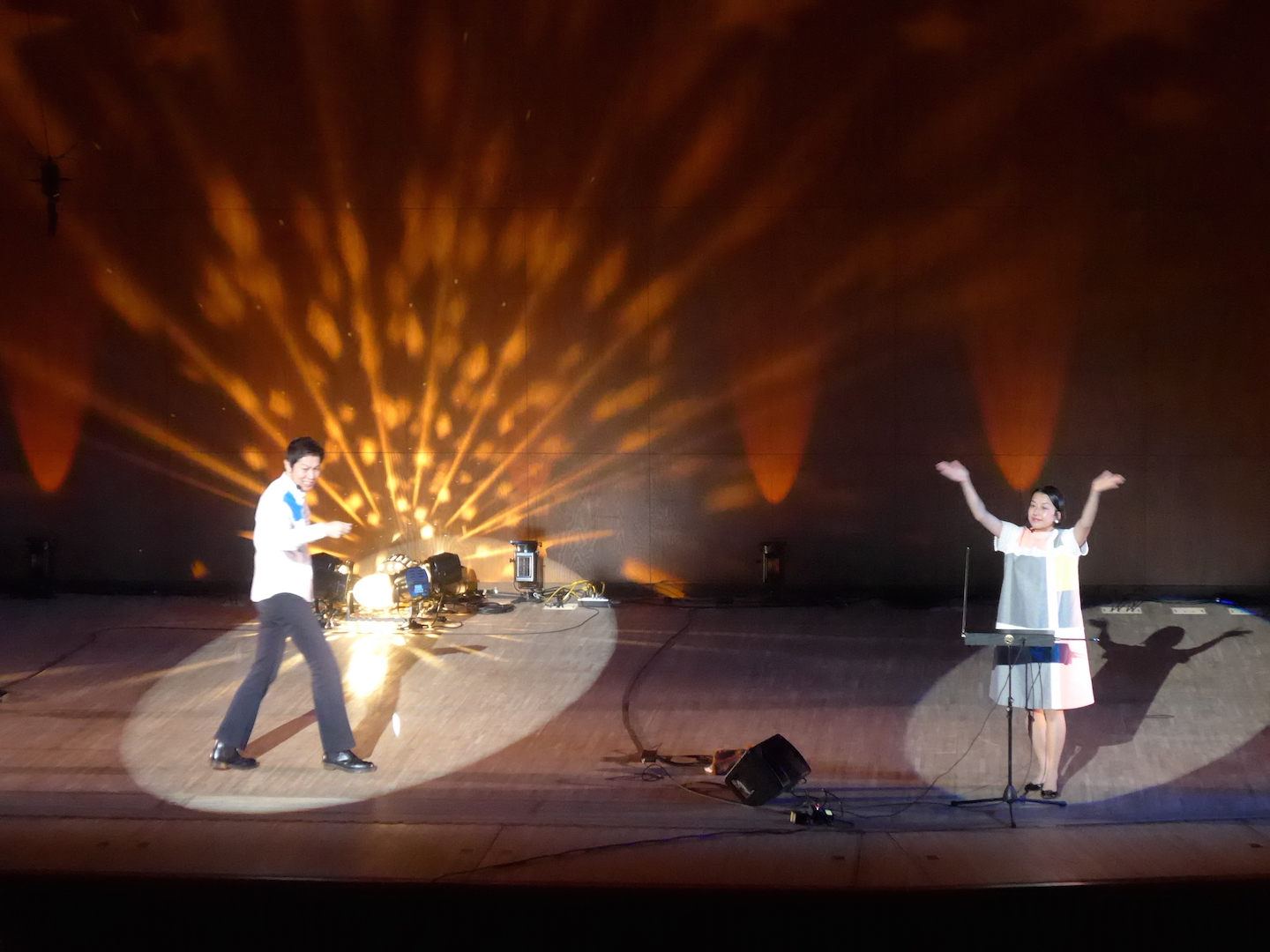
I had been to concerts at the music hall before, but on this day the music hall felt a little different, filled with a friendly atmosphere.
The music hall is such a comfortable space because you can enjoy music freely.
As I was thinking about this, I looked back and realized that Hanateru 's painting was almost finished.
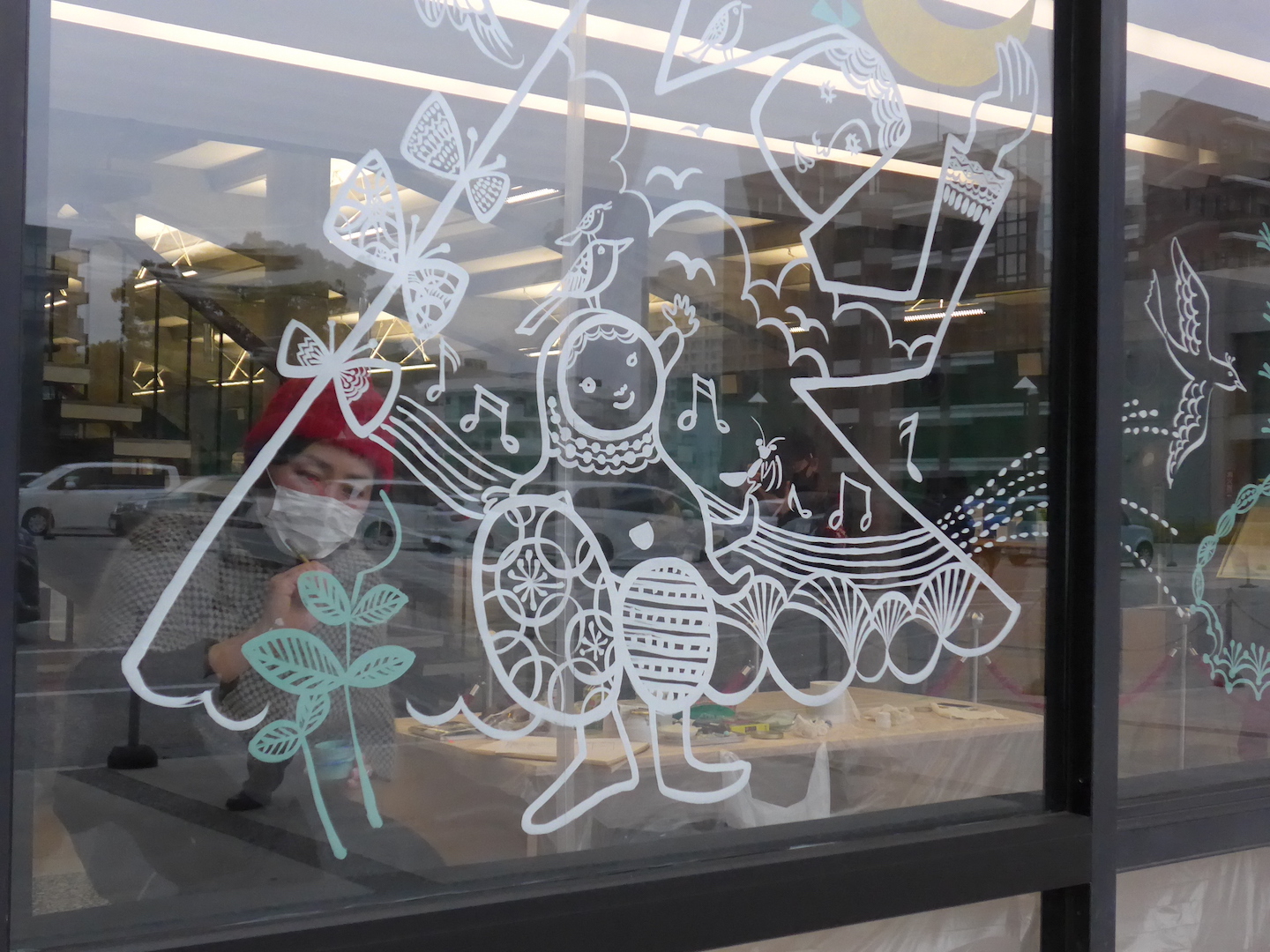
This is a picture taken around 4pm, just before closing time. Comparing it to the first image, you can get a sense of the gentle time that Hanateru has woven.
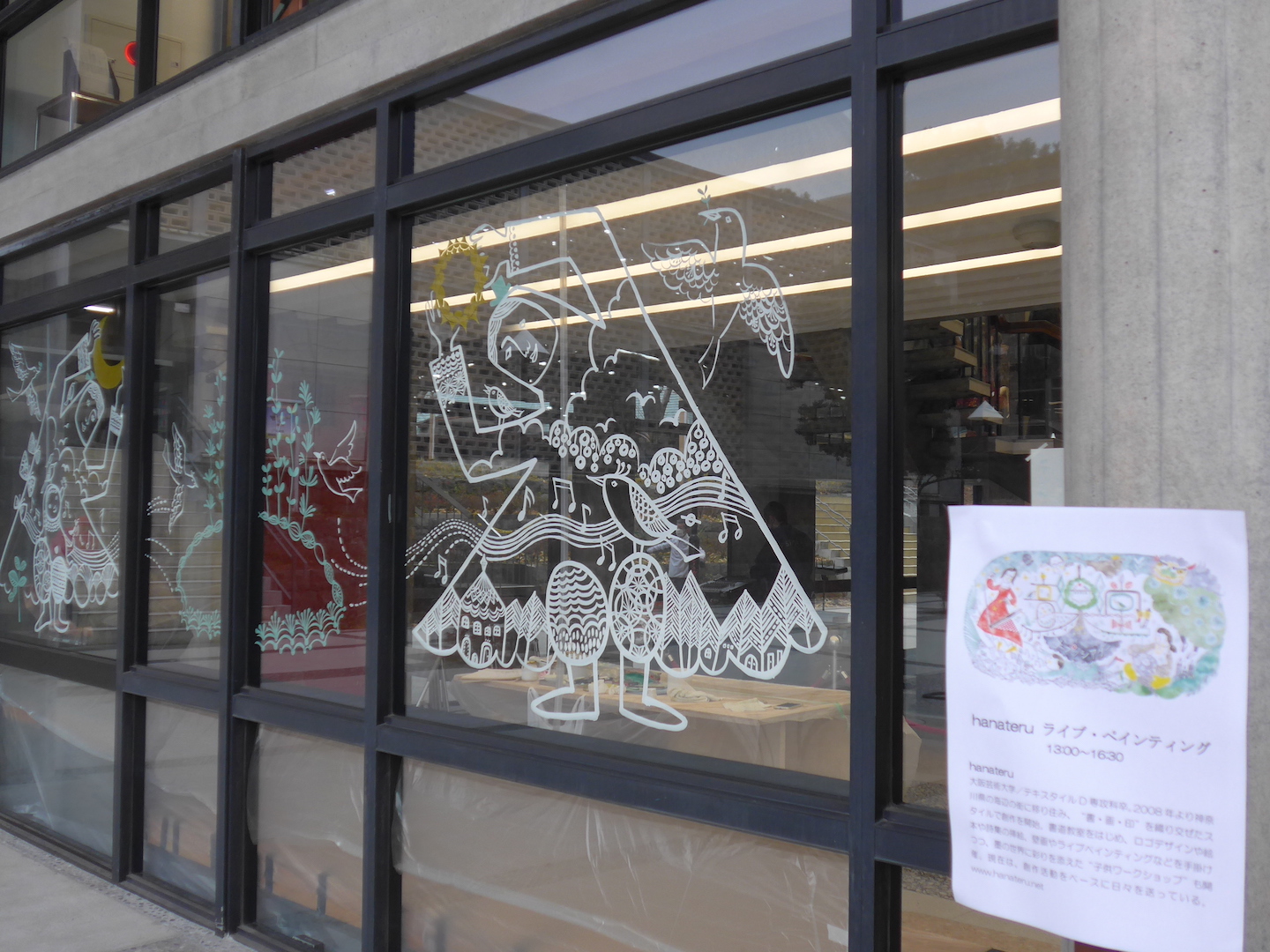
The YouTube "Ongakudo Channel" will not only feature live videos of the actual concert, but also online programs. If you want to hear the sound of the handpan, enjoy The Poo's original stage performance, see the full picture drawn by hanateru , or simply appreciate the beauty of Maekawa Architecture, be sure to check it out!
*The footage of the Music Hall Open Theatre will be released in late January.
